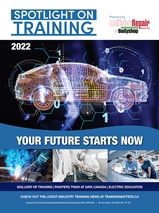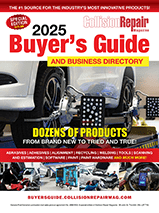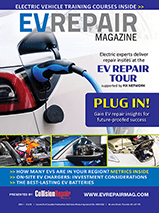The global Li-ion battery recycling market is expected to reach $6.9 billion by 2030, at a CAGR of 21.3% during 2023-2030
The growth of this market is attributed to the factors such as the surge in need to manage the disposal of used batteries, the growing demand for electric vehicles, and the declining prices of batteries. However, the lack of proper recycling infrastructure restrains the growth of the global Li-ion recycling market.
Growing government incentives for battery recycling and the rising recovery of valuable materials are expected to create growth opportunities for the players operating in this market. However, the high cost of Li-ion recycling is a major challenge for the growth of the Li-ion battery recycling market.
Based on business model, the global Li-ion battery recycling market is broadly segmented into contractual services and direct-to-market.
In 2023, the contractual services segment is expected to account for the larger share of the global Li-ion battery recycling market.
This segment’s large market share is attributed to the surging need to manage the disposal of used batteries, increasing government incentives and regulatory compliance for Li-ion battery recycling, rising need to reduce the cost of raw materials for new EV batteries. This segment is also projected to register the higher CAGR during the forecast period.
Based on battery type, the global Li-ion battery recycling market is broadly segmented into lithium cobalt oxide (LCO), lithium iron phosphate (LFP), lithium manganese oxide (LMO), lithium nickel cobalt aluminum oxide (NCA), lithium nickel manganese cobalt oxide (NMC), and lithium titanate oxide (LTO).
In 2023, the LCO is expected to account for the largest share of the global Li-ion battery recycling market.
This segment’s large market share is attributed to its several advantages over other types of lithium-ion batteries, including high power output, increasing use in applications such as global positioning system devices, tablets, laptop computers, smartphones, electric vehicles, and medical devices where high-power output and long cycle life are essential, LCO batteries limited lifespan, rising need to recover valuable materials from the Li-ion batteries.
However, the NMC segment is projected to register the highest CAGR during the forecast period.
In 2023, Asia-Pacific is expected to account for the largest share of the global Li-ion battery recycling market, followed by Europe and North America.
The region is also expected to witness rapid growth during the forecast period. The large market share of Asia-Pacific is attributed to the growing implementation of new policies and regulations to promote the recycling of lithium-ion batteries and reduce environmental pollution, the growing demand for lithium-ion batteries for EVs battery production, the surging amount of battery waste generated, and the growing awareness and concern for environmental sustainability.
Key questions answered in the report:
- Which are the high growth market segments in terms of business model, battery type, recycling process, and geography?
- What is the historical market for Li-ion battery recycling market across the globe?
- What are the market forecasts and estimates from 2023-2030?
- What are the major drivers, restraints, and opportunities in the global Li-ion battery recycling market?
- Who are the major players in the global Li-ion battery recycling market, and what shares of the market do they hold?
- Who are the major players in various countries, and what shares of the market do they hold?
- How is the competitive landscape?
- What are the recent developments in the global Li-ion battery recycling market?
- What are the different strategies adopted by the major players in the global Li-ion battery recycling market?
- What are the geographical trends and high growth countries?
- Who are the local emerging players in the global Li-ion battery recycling market and how do they compete with the other players?
Market Dynamics
Market Drivers
- Increasing Demand for Electric Vehicles
- Growing Need to Manage the Disposal of Used Batteries
- Growth in Battery Manufacturing
Market Restraints
- Lack of Proper Recycling Infrastructure
Market Opportunities
- Government Incentives for Battery Recycling
- Growing Emphasis on Recovering Valuable Materials
- Increasing Li-ion Battery Capacities
Market Challenges
- High Cost of Li-ion Battery Recycling
Trends
- Advancements in Recycling Technologies
- Increasing Investments in Li-ion Battery Recycling in Emerging Countries
Value Chain Analysis
- Mapping of Global Recycling Capacity, by Technologies
- Technologies of Lithium Recycling from Waste Li-ion Batteries
- Pre-Treatment Methods for Waste Lithium-Ion Battery
- Lithium Extraction Technologies from Pre-Treated Waste Lithium-Ion Battery
Competitive Landscape
- Key Growth Strategies
- Competitive Benchmarking
- Industry Leaders
- Market Differentiators
- Vanguards
- Emerging Companies
- Vendor Market Positioning
- Market Ranking by Key Players (2022)
Company Profiles
- Duesenfeld GmbH (Germany)
- RecycLiCo Battery Materials Inc. (Canada)
- Li-Cycle Holdings Corp. (Canada)
- Cirba Solutions (U.S.)
- Accurec-Recycling GmbH (Germany)
- Redux Recycling GmbH (U.S.)
- Redwood Materials Inc. (U.S.)
- Glencore plc (Switzerland)
- Fortum Corporation (Finland)
- Trishulavel Eshan Pvt Ltd (Li-Circle) (India)
- SNAM S.A.S (A subsidiary of Floridienne S.A) (France)
- Primobius GmbH (Germany)
- MTB Recycling (France)
- Tata Chemicals Limited (India)
- OnTo Technology (U.S.)
- American Battery Technology Company (U.S.)
- Attero Recycling Pvt. Lyd. (India)
- Umicore SA (Belgium)
- Lithion Recycling Inc. (Canada).
Scope of the report:
Li-ion Battery Recycling Market, by Business Model
- Contractual Recycling Services
- Contractual Recycling Services, By Source
- Lithium-ion Cell Manufacturing Waste
- Electronic Portable Devices
- Electric Vehicles
- Energy Storage Systems
- Other Sources
Contractual Recycling Services, By End-use Industry
- Consumer Electronics
- Automotive
- Industrial
- Power & Utility
- Other Industries
- Direct-to-Market
- Direct-to-Market, By Source
- Lithium-ion Cell Manufacturing Waste
- Electronic Portable Devices
- Electric Vehicles
- Energy Storage Systems
- Other Sources
Direct-to-Market, By End-use Industry
- Consumer Electronics
- Automotive
- Industrial
- Power & Utility
- Other Industries
Direct-to-Market, By Material
- Graphite
- Nickel
- Cobalt
- Copper
- Manganese
- Lithium
- Aluminum
- Iron
- Other Materials
Li-ion Battery Recycling Market, by Battery Type
- Lithium Cobalt Oxide (LCO)
- Lithium Iron Phosphate (LFP)
- Lithium Manganese Oxide (LMO)
- Lithium Nickel Cobalt Aluminum Oxide (NCA)
- Lithium Nickel Manganese Cobalt Oxide (NMC)
- Lithium Titanate Oxide (LTO)
Li-ion Battery Recycling Market, by Recycling Process
- Pyrometallurgical Process
- Hydrometallurgical Process
- Other Recycling Processes
For more information about this report visit https://www.researchandmarkets.com/r/7d9cl2
About ResearchAndMarkets.com
ResearchAndMarkets.com is the world’s leading source for international market research reports and market data. We provide you with the latest data on international and regional markets, key industries, the top companies, new products and the latest trends.
Contacts
ResearchAndMarkets.com
Laura Wood, Senior Press Manager
press@researchandmarkets.com
For E.S.T. Office Hours Call 1-917-300-0470
For U.S./ CAN Toll Free Call 1-800-526-8630
For GMT Office Hours Call +353-1-416-8900





















